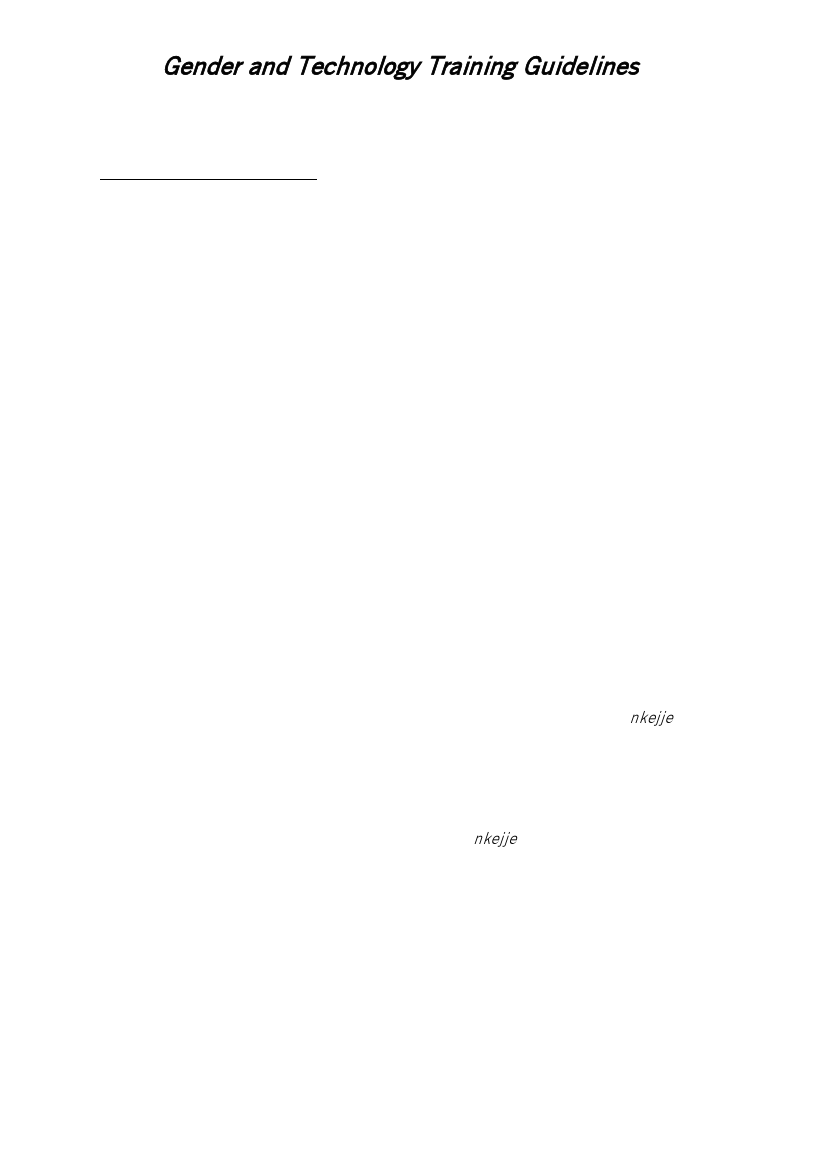
Gender and Technology Training Guidelines
Session 15 - Case Studies
4. Nkejje fish in Lake Victoria
The women living along the shores of Lake Victoria make use of the many species of
fish that exist in this huge area of fresh water to ensure the livelihood of their
families. The small Nkejje fish help prevent malnutrition and related childhood
diseases such as measles and Kwashiorkor, as it is believed to have a medicinal
value.
Women have been involved not only in the processing of fish products but also in
fishing itself. To catch the Nkejje fish, women use rectangular floats to which they
would attach a special thorny scrub whose ash would attract the Nkejje as it fell in
the water. Traditional fishing equipment used in shallow waters was made out of
papyrus, tree bark, banana fibres and creepers.
As modern fishing technology has replaced traditional equipment, women's sphere of
activity has become limited to the processing of the fish which is done by smoking it
in banana leaves, peels or grass. The low fat content of the Nkejje fish makes it
suitable for sun drying which is done on a clean rock. To protect the flavour of the
fish and exposure to the sun it is covered with grass. The drying process continues at
night due to the heat radiating from the rock surface.
The Ugandan government together with 2 international companies and advice from a
foreign fishery expert, introduced Nile perch and thilapia into the lake in 1965,
without any consultation of the local community. The new fish fed on the Nkejje
almost to the point of extinction. As the Nkejje fish decreased, the growth of Plankton
and other Algal plants increased, as it was the Nkejje that fed on them, creating an
alarming ecological imbalance. Also the big Nile processing plants set up around the
lake have posed a pollution threat. Being dependent on the high-protein nkejje to
combat malnutrition in their children, low income mothers have suffered from the
scarcity of fish, and the fact that they cannot give Nile perch to children because of
its high fat content.
In the midst of all these changes women have developed innovative ways to deal with
these new circumstances. To make the now scarce nkejje last, after drying the fish,
women pound it into a powder using a mortar and pestle or a grinding stone, and
sieve it. In this way it can be preserved for long periods of time without any
preservatives and can be used in baby and other food in small quantities when
needed. Since the fish has to be completely dry to be pounded it cannot be washed
after it is dried. Therefore in order to assure the hygiene of the product women have
started washing the fish immediately after catching, stacking them on sticks passed
through their gills to be laid out on Papyrus mats made specially for the clean drying
of the Nkejje.
Seeing the demand for this product various entrepreneurs have taken up the local
women's idea of powdering the fish. Also recently the government has given
69